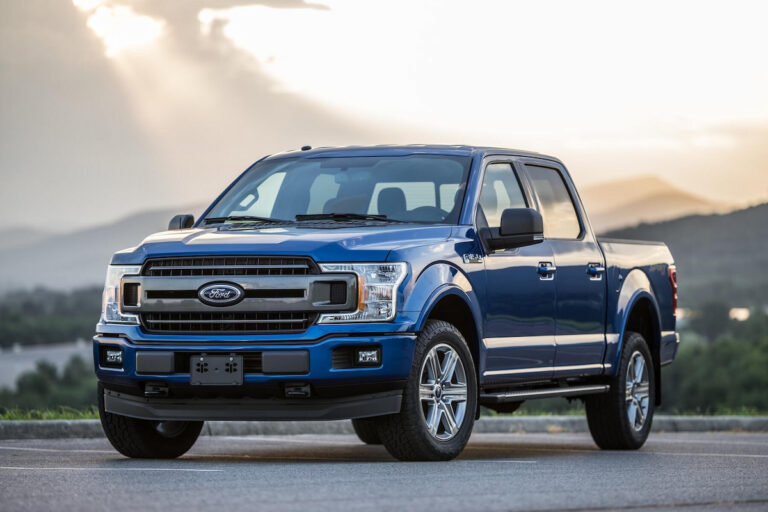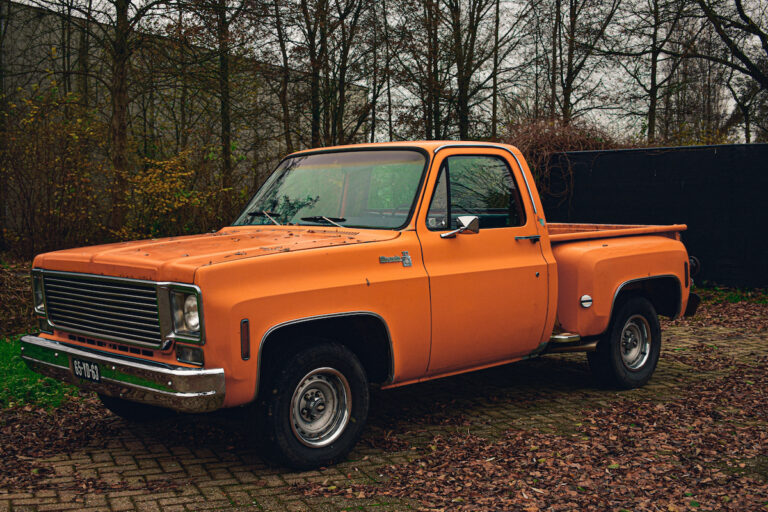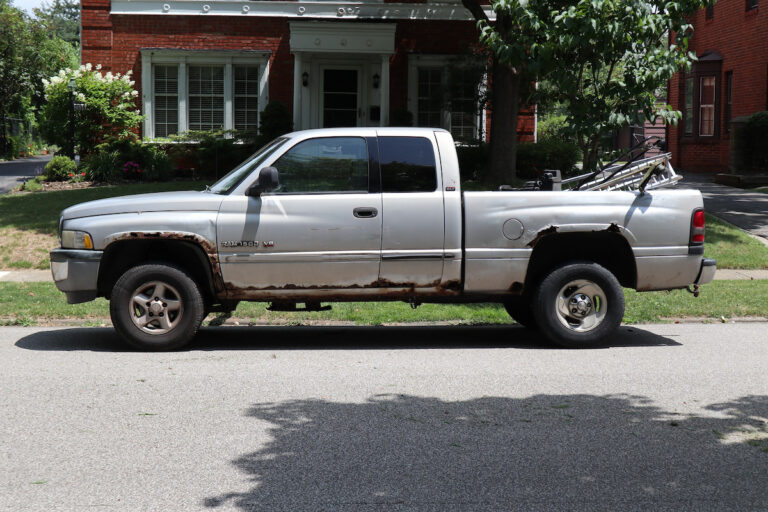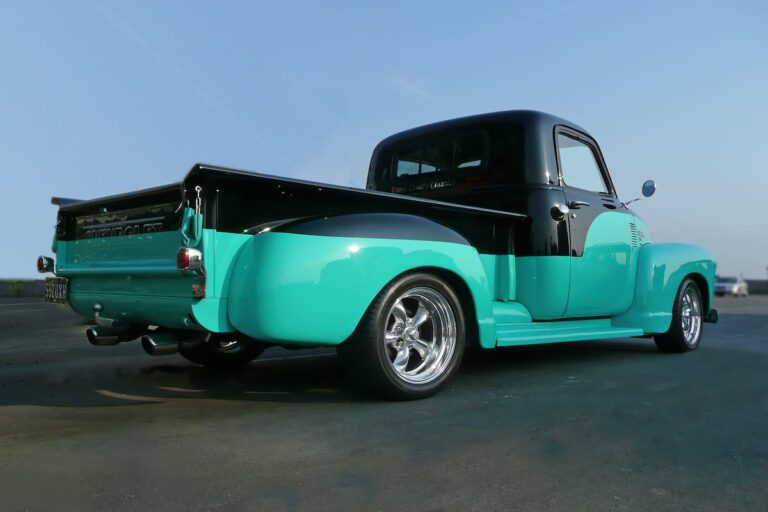Why Are Pickup Trucks Rear Wheel Drive?
There are four kinds of drive trains available for motor vehicles: front-wheel drive (FWD), rear-wheel drive (RWD), four-wheel drive (4WD), and all-wheel drive (AWD).
Most sedans are FWD, whereas pickup trucks and SUVs typically use RWD.
Pickup trucks, SUVs, and all-terrain vehicles often have RWD because it provides more power and better weight distribution. When towing, trucks with RWD have more traction and can pull more weight than FWD vehicles.
FWD vs RWD vs AWD vs 4WD

Before discussing the standard RWD drive train in pickup trucks, it’s important to understand the differences between front-wheel drive, rear-wheel drive, four-wheel drive, and all-wheel drive.
Most cars come standard with front-wheel-drive, using their front tires for both steering and power.
FWD vehicles lack a driveshaft extending to the rear tires, making them lighter and more compact.
Rear-wheel-drive is a two-wheel drive train where the rear tires propel the vehicle, and the front tires are used for steering.
Four-wheel-drive vehicles send equal power to the front and rear axles, whereas all-wheel-drive sends power to both axles but not always equally.
Different vehicles use different drive trains as a matter of practicality, and each system has advantages and disadvantages.
Because front-wheel-drive vehicles don’t send power to the rear wheels, they don’t need a drive train extending from the engine to the rear axle.
These shorter power trains make them lighter and more fuel efficient than the other drive trains.
FWD vehicles are also cheaper to manufacture, making them more affordable, and most sedans, SUVs, and crossovers come standard with FWD.
Rear-wheel drive is common in pickup trucks and performance vehicles as they tend to be heavier and handle better than cars with FWD.
They also generate more power and better distribute the vehicle’s weight, improving payload and towing capacities.
All-wheel-drive vehicles send power to both front and rear axles simultaneously, though it can fluctuate depending on driving conditions.
The vehicle can detect when an axle or tire loses traction and automatically alters the power it sends.
In some vehicles, AWD can be turned on or off.
The system is best used for off-roading and in regions with freezing winters or other rough driving conditions.
Four-wheel drive often gets confused with AWD because they work similarly.
4WD vehicles send power to both the front and rear axles simultaneously, but it sends equal power to both regardless of traction.
4WD is designed for extreme off-roading and can be disengaged when not in use.
Driving on the pavement with 4WD engaged can even damage your drive train.
Rear Wheel Drive In Pickup Trucks
Despite their popularity as everyday vehicles, pickup trucks are primarily designed as work trucks made to haul, carry, and tow heavy items.
Most modern pickup trucks use rear-wheel drive as their standard drive train because RWD systems generate more pulling power than front-wheel drives.
RWD vehicles are also better at distributing weight than FWD vehicles.
When heavy loads are placed in the truck’s bed, it sits directly above the rear axle, which balances the load’s weight over the vehicle’s power center.
It’s easier for a truck to drive smoothly with weight centered above the rear axle instead of using the front tires to pull the weight forward.
RWD works the same way with towing as it does with hauling. With RWD, the truck’s power center is more evenly spaced between the truck’s weight and the weight of the trailer.
This design is more efficient, improves handling, and allows the pickup to pull heavier loads.
But if power and weight distribution are the biggest positives of RWD, wouldn’t AWD or 4WD be a better choice?
Firstly, RWD vehicles have lower manufacturing costs, giving them a more appealing price point.
Secondly, 4WD isn’t made for hauling, towing, or, realistically, driving on pavement.
It’s primarily a setting for off-roading in extreme conditions like driving in mud/snow, over boulders, or up steep grades.
4WD also isn’t safe in normal road conditions and can damage the drive train, making it a poor choice for everyday driving.
Lastly, AWD might seem like the best choice for trucks because of the even weight distribution and potential towing power, but it has other drawbacks.
While AWD is the best for towing, it’s much less fuel efficient than a 2WD system like FWD or RWD.
Pickup trucks come standard with RWD because it provides better fuel efficiency than AWD while still providing the power needed in a work truck.
Buyers who need the extra power of an AWD system can often purchase a truck with both RWD and an AWD system.
The pickup would come with a standard RWD and the option to turn on AWD.
Are There Any FWD Trucks?

Surprisingly, there are a few options for FWD pickup trucks.
Smaller, more compact trucks are increasingly turning to FWD.
Compact trucks like the Ford Maverick and Hyundai Santa Cruz aren’t often used as work trucks and don’t require the same power larger trucks do.
Because they don’t need the power of RWD, switching to FWD increases fuel economy and lowers the manufacturing costs of these vehicles.
However, you won’t find a mid-sized or larger truck with FWD as they’re commonly used as work trucks or for off-roading – activities that require more power and the better weight distribution provided by RWD.
Conclusion
Most pickup trucks come with rear-wheel drive because they’re more affordable and fuel-efficient than AWD vehicles but provide more power for towing and hauling than FWD vehicles.
Some trucks have variable AWD, which allows drivers to activate it under certain driving conditions, while some compact trucks used for everyday driving are produced with FWD.
Generally speaking, however, mid-sized and larger trucks use RWD because it’s the most effective drive train for hauling, towing, and driving on rough or uneven terrain.






